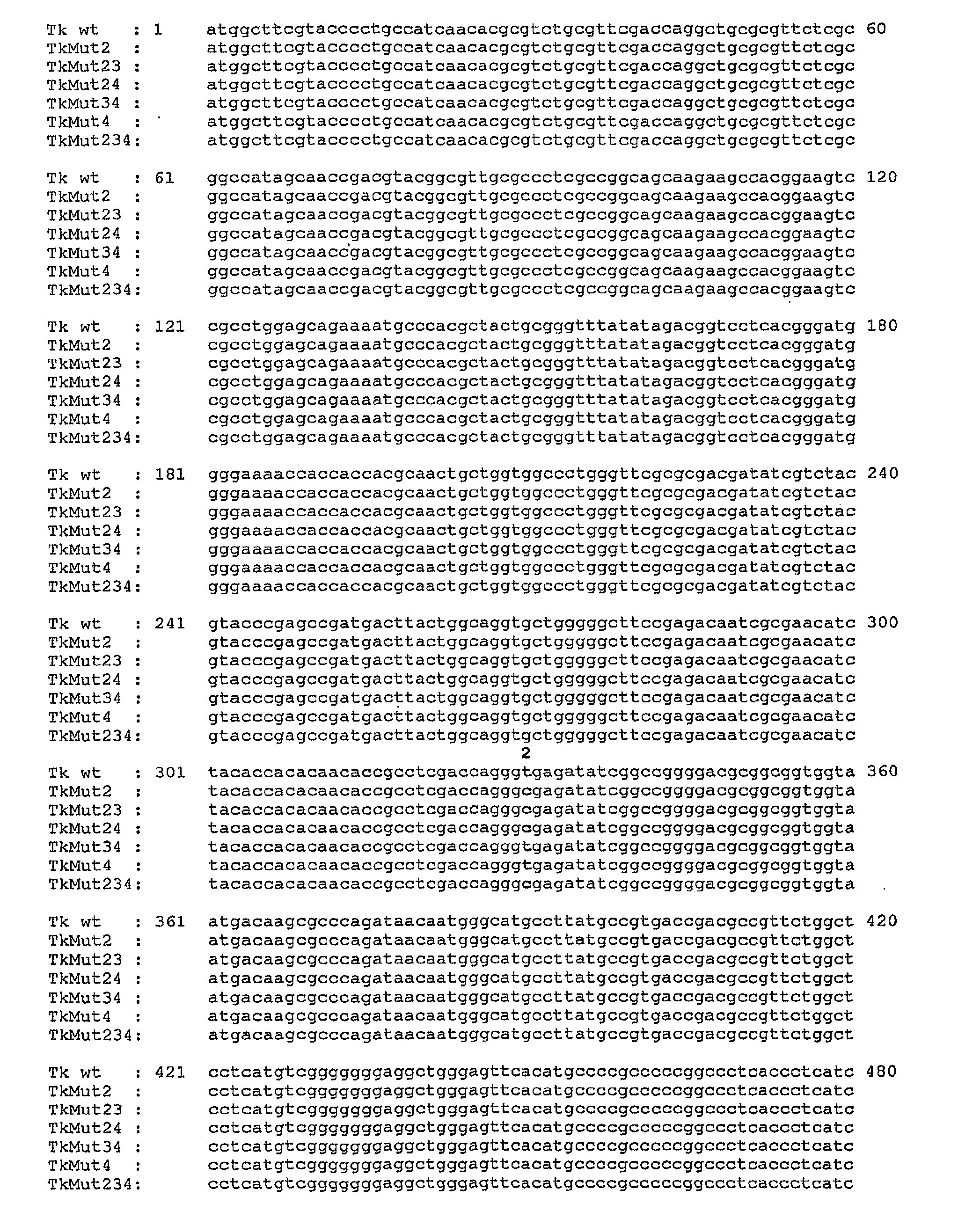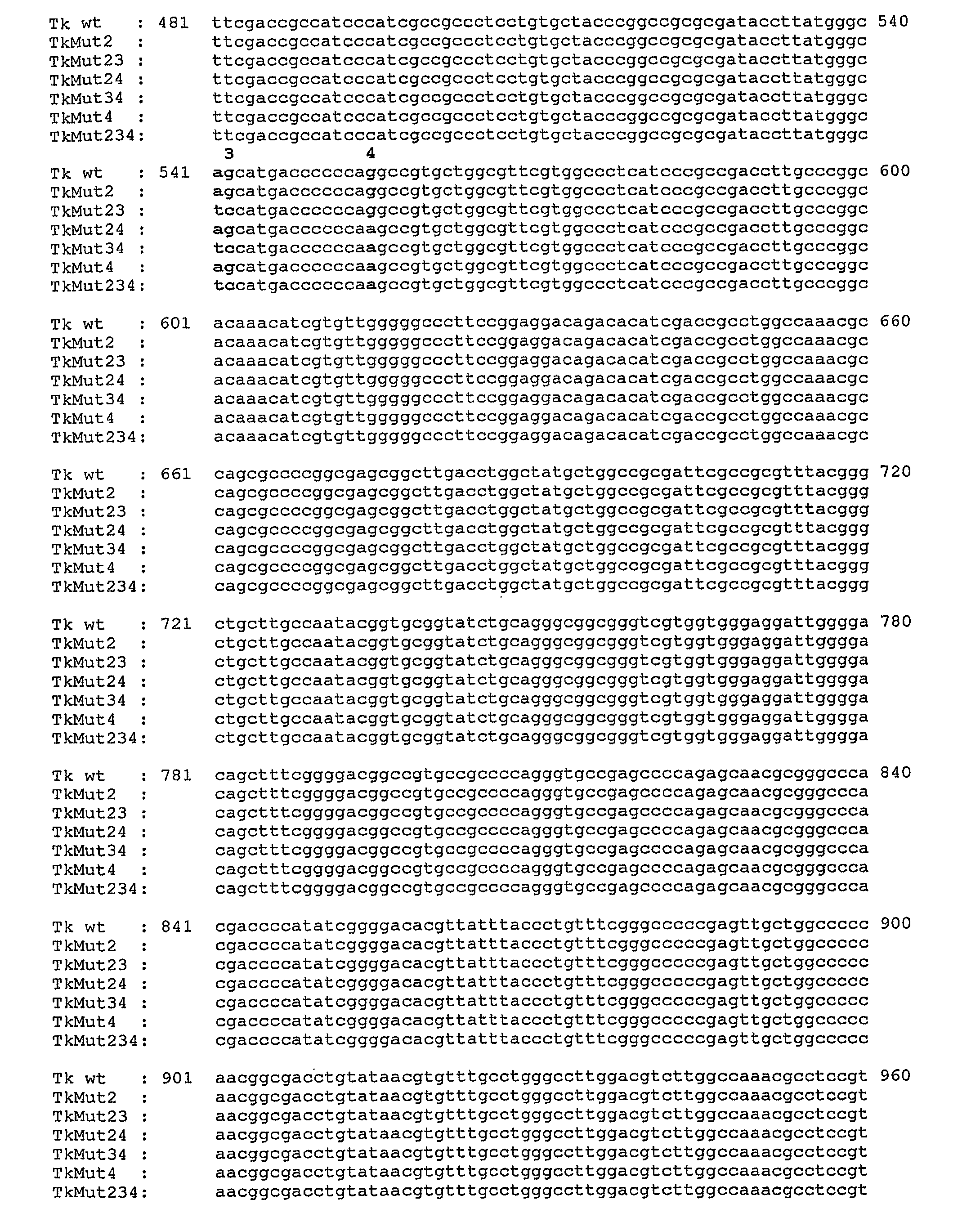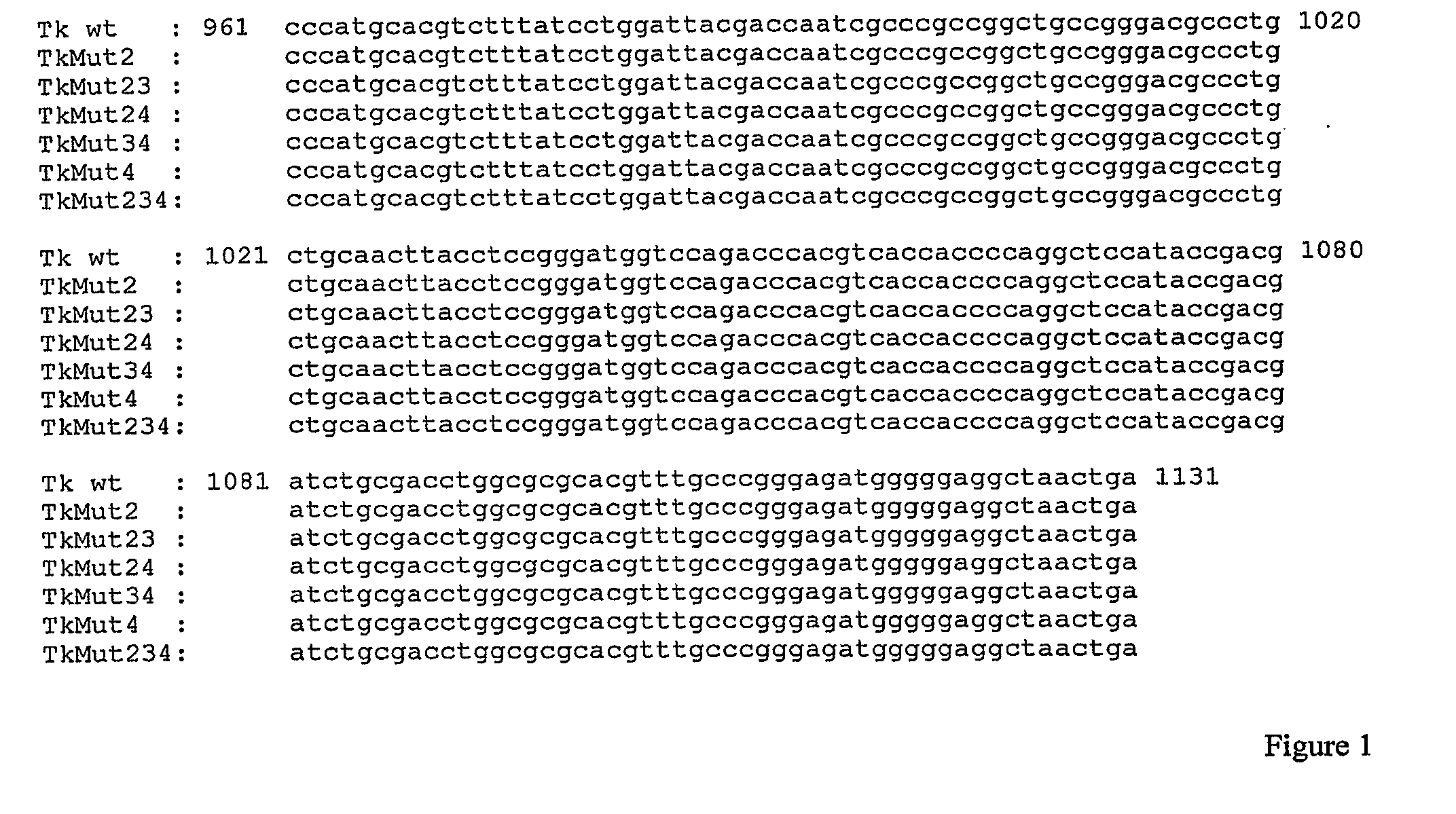Thymidine kinase
a kinase and thymidine technology, applied in the field of thymidine kinase, can solve the problems of cell death, emergence of ganciclovir resistance in hsv-tk transduced cells, and the dna synthesis to be stopped,
- Summary
- Abstract
- Description
- Claims
- Application Information
AI Technical Summary
Benefits of technology
Problems solved by technology
Method used
Image
Examples
example 1
Relative Frequency of the Spliced Form of HSV-tk in SFCMM-3#35 Supernatant and Transduced Cells
[0197]The relative frequency of the spliced form (percent spliced form versus spliced plus unspliced) was evaluated by two quantitative real-time RT-PCR (RNA from supernatant) or PCR (DNA from transduced lymphocytes), specific for each HSV-tk form, using TaqMan 7700 system.
Materials and Methods
SFCMM-3 Retroviral Vector
[0198]The GP+envAm12 (Am12) -derived producer cell line, SFCMM-3 clone 35 (Am12 / SFCMM-3#35), was expanded 5 days in DMEM (Cambrex) medium containing 2 mM glutamine and 10% of irradiated FBS (Hyclone). Retroviral supernatants were harvested from confluent flasks in X-VIVO 15 medium (Cambrex) supplemented with 2 mM glutamine after 24 h incubation of the cells at 33° C. Virus-containing supernatants were filtered and stored at −80° C. until further use.
T Cell Transduction
[0199]Peripheral blood mononuclear cells were collected from healthy donors and isolated by centrifugation on...
example 2
Variant of Spliced TK in scSFCMM-3 Supernatants and Transduced Cells
Materials and Methods
[0209]scSFCMM-3 Retroviral Vector and Producer Cell Lines
[0210]Vector DNA TK3 (TK3 Molmed and TK3 are different preparations of the same plasmid scSFCMM-3, described in: Chalmers 2001, Molecular Therapy 4:146-148) was transfected into the echotropic packaging cell line GP+E-86 (E86) by calcium phosphate coprecipitation. The supernatant obtained from the transient transfection of E86 cells was filtered and then used to infect the Am12 cell line. The fraction of cells containing TK3 was isolated by using immunomagnetic selection and the resulting Am12 / TK3 bulk culture was expanded. After limiting dilution of the Am12 / TK3 bulk culture, clones #53, #71, and #80 were selected on the basis of high growth capacity and transduction efficiency on T lymphocytes.
[0211]The Am12 / TK3 clones were expanded in DMEM (Cambrex) containing 2 mM glutamine and 10% irradiated FBS (Hyclone). Retroviral supernatants were...
example 3
Elimination of Splicing by Site Direct Mutagenesis
Materials and Methods
[0228]Starting from the wild type SFCMM-3 vector, recombinant plasmids were prepared by site-directed mutagenesis with different mutations in the HSV-tk gene (FIG. 6). Third-base degenerate changes were introduced thus in all instances the wild type amino acid sequence of HSV-tk enzyme was preserved.
Site-Directed Mutagenesis
[0229]To generate pcDNA3.l-tk plasmid, SFCMM-3 plasmid was digested with EcoRI and XhoI and the EcoRI / XhoI fragment was ligated to EcoRI / XhoI digested pcDNA3.1 (Invitrogen).
[0230]From the pcDNA3.1-tk plasmid, all the HSV-tk mutants were generated by site-directed mutagenesis using the QuickChange Site-Directed Mutagenesis kit (Stratagene). The oligonucleotide primers used to introduce the desired mutation were each complementary to opposite strands of the vector. The sequences of sense primers are reported in the following table:
PositionSEQMutantPlasmidof mutationID NO:Oligo sequenceagenerated...
PUM
 Login to View More
Login to View More Abstract
Description
Claims
Application Information
 Login to View More
Login to View More - R&D
- Intellectual Property
- Life Sciences
- Materials
- Tech Scout
- Unparalleled Data Quality
- Higher Quality Content
- 60% Fewer Hallucinations
Browse by: Latest US Patents, China's latest patents, Technical Efficacy Thesaurus, Application Domain, Technology Topic, Popular Technical Reports.
© 2025 PatSnap. All rights reserved.Legal|Privacy policy|Modern Slavery Act Transparency Statement|Sitemap|About US| Contact US: help@patsnap.com



